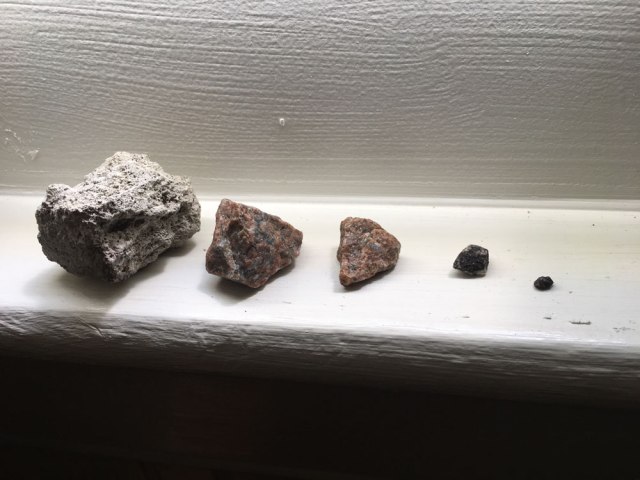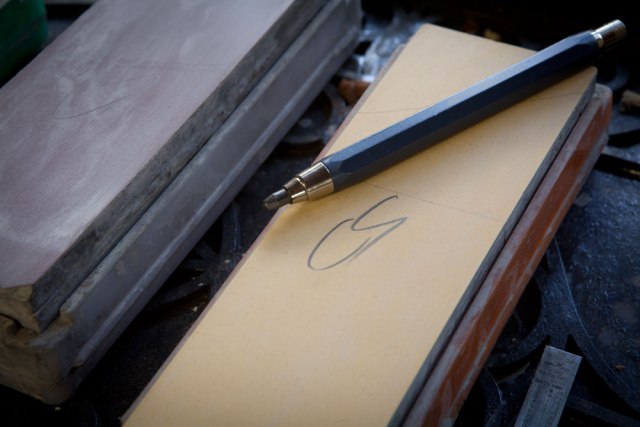
Read the other installments in the “Sharpen This” series via this link.
I roll my eyes when people talk about the superiority of their chosen sharpening media, whether it’s waterstones, oilstones, diamonds or cinderblocks. To my ears, it’s like you’re boasting about the superiority of the oxygen molecules that you breathe compared to those in your neighbor’s lungs.
Sharpening comes down to abrasion with small rocks. Some rocks cut steel faster but break down faster. Other rocks cut steel slower but are sturdier. Some rocks are expensive; others are cheap.
The practical differences among the systems are minimal. As a result, there is no clear winner among the rocks. Anyone who tells you different is either an evangelist or sells little rocks for a living.
I can say this with confidence because I wallowed in every sharpening system for about 15 years. I used them to sharpen tons of chisels and plane blades for tool tests at Popular Woodworking Magazine. And I listened to every snake oil salesman’s speech and put their assertions to the test.
We all want to believe that there is a superior system out there. It’s human nature to compare, contrast, contest and cajole. But the truth is that the best system is the one you have mastered.
So when I talk about sharpening media, I don’t give two figs about the type of media – oilstone, sandpaper, diamond, gallstone. Instead, what is far more important is the actual size of the little rocks you are using (which are best measured in microns when talking about sharpening).
Big rocks remove material quickly and leave deep scratches. Little rocks remove less material but leave smaller scratches. Tiny rocks remove little baby mousy bites of material and leave scratches the naked eye cannot see.
So the competent sharpener uses big rocks to create the zero-radius intersection. Then he or she uses the little rocks and then the tiny rocks to refine and polish the edge so it’s more durable.
That’s why the most important questions when it comes to sharpening media are: How big are my big rocks? And how tiny are my little ones?

Measuring Rocks
Here’s the useful information: The world of practical sharpening media ranges from rocks that are about 200 microns in size down to rocks that are 1 micron (or smaller). A rock that is 200 microns is about .008” – that’s about the size of a thick plane shaving. A rock that is 1 micron across is about .00004”. By way of comparison, a human blood cell is about 5 microns across.
I separate the rocks into three different sizes, each with a different job in sharpening. The biggest rocks (200 to 40 micron) are used for grinding edges. Grinding is for fixing damaged edges or changing the shape or angle of the edge.
In my shop, this job is handled by an #80-grit grinding wheel, which has 192-micron rocks.
The next size rock is what I use to sharpen an edge that has become dull from normal work (not abuse). This rock is usually between 20 microns and 7 microns in size. This rock removes metal quickly and leaves scratches that are easy to polish out with smaller rocks.
You need only one grit in this size (unless you love to fund the sharpening stone industry). In my shop, this is a #1,000-grit waterstone, which has 15-micron rocks in it.
Lastly there are the rocks used for polishing. These are from 6 microns down to a fraction of a micron. Polishing an edge helps make it more durable (more on that in a future post). Deciding on your polishing rocks is all about how much patience you have. Some people have three or four grits for polishing. Others have one polishing grit. Neither choice is superior to the other.
The more polishing you do the longer your edge will last. But there is definitely a point of diminishing returns. Finding that point is up to you.
In my shop, I use two polishing grits. A #4,000-grit waterstone (4 microns) and an #8,000-grit waterstone (2 microns).
Those are my rocks – 192, 15, 4 and 2 – and they are no better than yours.
— Christopher Schwarz
P.S. You are going to hear people challenge the above information with words such as “mesh,” “polycrystalline” and “binder.” When they do this, let your eyes glaze over and build a motorcycle in your frontal lobe. Then, when they are out of breath, ask to see their edges. I haven’t found that high-level abrasive knowledge leads to superior edges. If they won’t show you their rocks, then ask them to “sharpen this.”